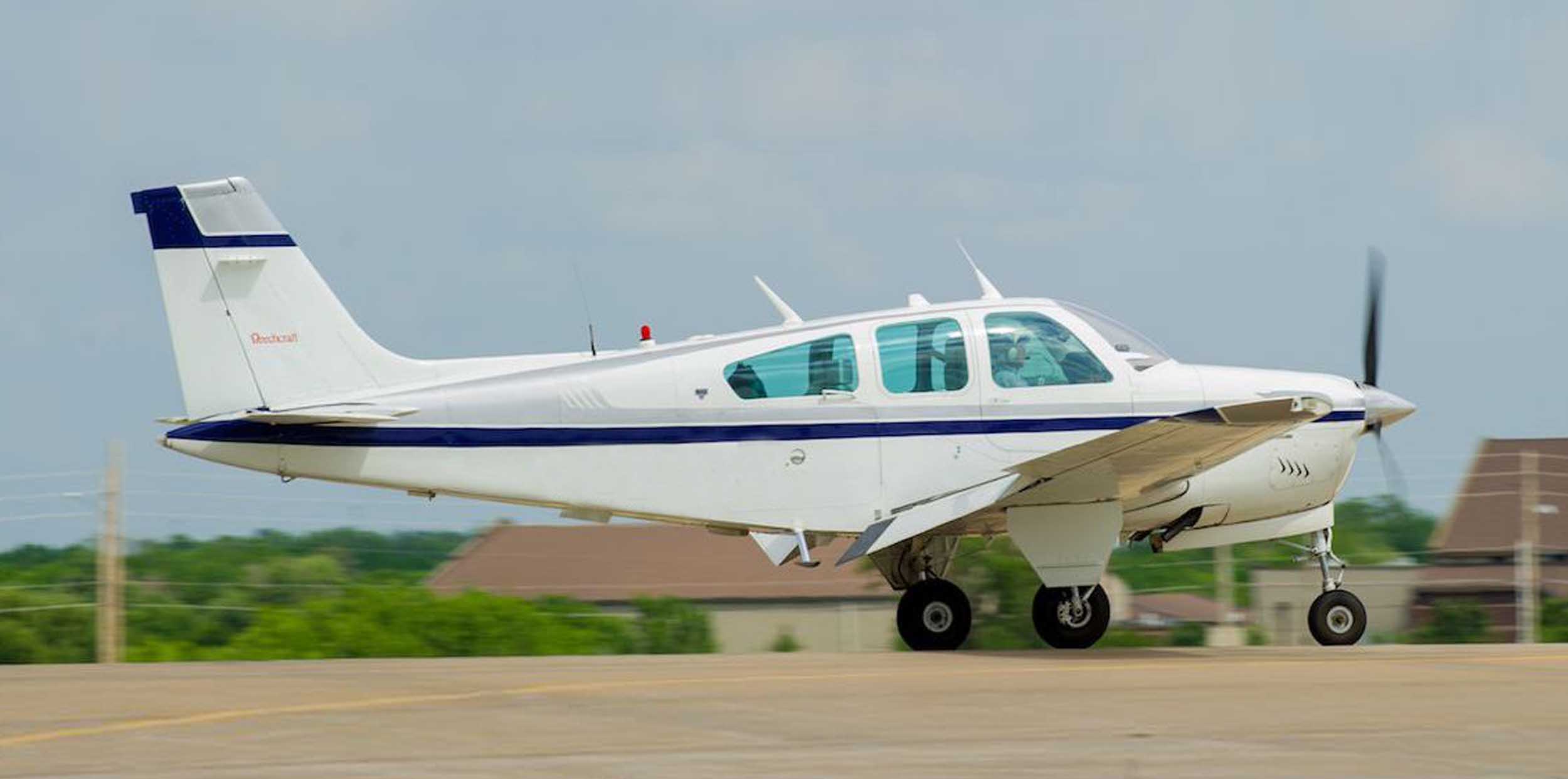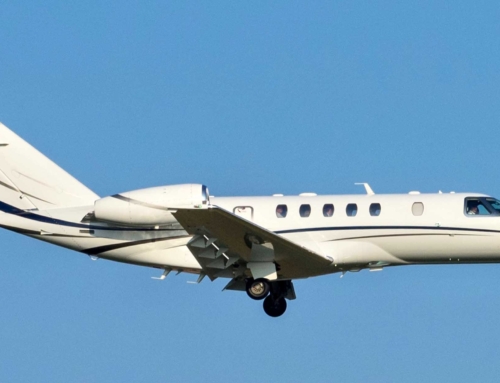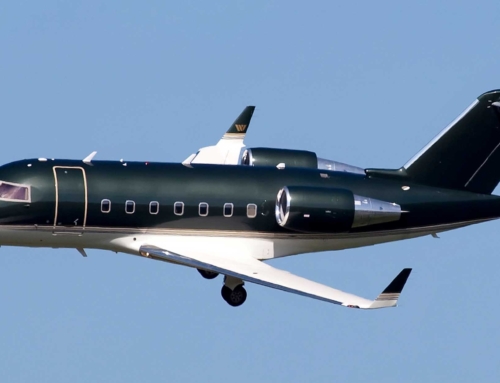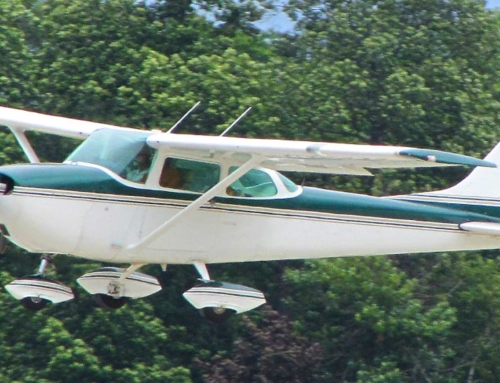Founded in Wichita, Kansas, in 1932, the Beech Aircraft Corporation started during the Great Depression and just before World War II began. Founder and President Walter Beech, oversaw operations until he unexpectedly died in 1950. While Walter was alive, his wife, Olive Ann Beech, worked alongside him as Beech Aircraft’s secretary and treasurer. After her husband’s death, Olive took over as President for 18 years and served as board chairman until retiring in 1982.
Beechcraft’s Model 17 Staggerwing is still a legend from its earlier years in production. Vice President of Engineering, Ted Wells, led the production of the Staggerwing, taking its first flight in 1932. Moving forward, 750 more Staggerwings were built, forever establishing the Beechcraft brand in aviation history.
Then, Beechcraft’s ever-famous Bonanza enters the picture, taking its first flight in 1945. To date, the Bonanza is the most popular Beechcraft aircraft with the longest production run of any other plane in the world. There are 3 major variants of the Bonanza that exist, including the Model 35 Bonanza with its signature V-tail, the Model 33 Debonair or Bonanza with a conventional tail, and the Model 36 Bonanza, which is a longer version of the 33.
Since its start, Beechcraft has experienced several financial-related hardships, and in early 2014, Beechcraft was sold to Textron for $1.4 billion. It is now part of the “Big Three” in general aviation manufacturing, including Cessna and Piper Aircraft.
Development Of Beechcraft’s Bonanza F33A
Beechcraft’s Bonanza is popular for several reasons. Its production comes from Beechcraft’s classic 225-horsepower Debonair. However, its popularity increased because of its utility, performance, and continually improving reputation over time. Pilots enjoy flying the Bonanza because it offers a modern tail design, unlike its controversial V-tail predecessor. The Bonanza has an incredible following through the American Bonanza Society (ABS), and enthusiasts worldwide consider it one of the most influential aircraft in history.
-
Country of Origin: America
Beechcraft Bonanza 1994 F33A Statistics
The following are statistics for the latest variation of the Beechcraft Bonanza F33A.
|
182 kts Maximum Speed |
889 nm Maximum Range |
4 Maximum Occupants |
1966-1994 Range Of Years Manufactured |
|
1,791 Total Aircraft Build |
1,202 Total Registered On FAA |
1,467 lbs Useful Load |
$279,000 Average Sale Value |
|
Unknown Average Days On Market For Sale |
Visit VREF Online VREF Demand Rating |
Operational Resources
Local Resources
Manufacturer
Insurance
- BWI Aviation Insurance
- Starr Gate
- Travers Aviation Insurance
- AOPA Insurance
- USAA Aircraft Insurance For Pilots
Beechcraft Bonanza 33A Details
Interior
The interior of a late 1980 and early 1990s F33A model is likely well-equipped with an optional Bendix King KFC 150 flight control system and air conditioning. Its baggage door is cargo size and fitted with large latches. The baggage area itself is equipped to handle 270 pounds of cargo. This model also features a 5th optional seat installed in the baggage hold. Large windows offer a wide view from the inside. Seating is cloth, and carpeting is found throughout the flooring of the aircraft. Avionics for the F33A is located on the right side of the control panel, while engine instruments are closer to the center stage.
Exterior
Late 1980 to early 1990s, F33As contain a 285 horsepower Teledyne Continental 10-520 engine or similar and a three-blade 80-inch McCauley propeller for enhanced performance. There is no rudder trim, but the engine is designed to offset its torque.
Avionics
A 1994 Beechcraft F33A may or may not contain the following avionics:
- Garmin GNS-480 WAAS GPS and nav/comm
- Bendix/King digital KX-155 nav/comm
- Bendix/King KFC-200 autopilot, slaved HSI, FD, GPS roll steering
- BF Goodrich WX-1000 stormscope
- PS engineering PMA-7000 audio panel intercom and recorder
- Fuel management computer with digital LED gauges
- Bendix/King KR-87 ADF
- Bendix/King KT-76A transponder
- ADS-B out tail beacon
- Altitude alerter with transponder output monitor
Specifications
- Configuration: Single Engine, Piston, Retractable Gear
- Max Seats: 4
- Max Takeoff Weight (F33A): 3,400 lbs.
- Cruise: 172 kts
- Range : 889 nm
- Take Off Run: 1,000 ft.
- Landing Roll: 760 ft.
- Wing Span: 33 ft. 6 in.
- Length: 26 ft. 8 in.
- Height: 8 ft. 3 in.
- Take Off (50 ft.): 1,225 ft.
- Landing (50 ft.): 1,150 ft.
Beechcraft Bonanza 33A Models
The following is information on all Beechcraft Bonanza 33 models.
35-33 Debonair
The 35 Debonair is the previous archetype to the 33 Debonair. After Piper Comanches grew in popularity, Beechcraft created this mid-priced version to compete. It debuted in 1960 with a starting price of $19,965. The Debonair Bonanza offered a conventional fin, tailplane, and basic trim and interior. It’s powered by a 225-hp Continental IO-470-J. Its conventional tail sets it apart from the 35, which has a v-tail style. A total of 233 Debonairs were built.
35-A33 Debonair
Beechcraft’s 1961 35-A33 is fitted with an improved interior and powered by either an IO-470J or IO-470K engine. This version also comes with extra equipment, additional windows, a hat shelf, and a gross weight of 3,000 lbs.
In 1962, Beechcraft introduced the B33. It offers a more refined design with a new instrument panel, contoured fin leading edge, and fuel tank modifications, per the N35 Bonanza. A total of 426 B33s with IO-470K engines were built, and this model remained in production until 1964.
35-C33 Debonair
The C33 Debonair made its way into the market from 1965 to 1967. It has a boosted gross weight of 3,050 lbs. Its design consists of enlarged rear windows. A total of 305 were sold. A Continental IO-470-K engine powers the C33 model.
C33A Debonair
Beechcraft’s 1966 model, the C33A Debonair, is fitted with V35 Bonanza’s Continental 285 hp IO-520 B/BA engine. Many people had figured out at this point that the C33A Debonair is essentially a Bonanza built with a straight tail. A total of 179 were produced.
D33
This model is an S35 modified and showcased as a military close-support prototype with a conventional tail assembly and 6 underwing hardpoints.
E33 Bonanza
The next Beechcraft Debonair model following the C33A is the E33, produced in 1968. Beechcraft continued to make the 225 horsepower version and the 285 horsepower E33A. Besides dropping the “Debonair,” it also features a new windshield. A total of 116 E33s were built.
E33A Bonanza
From 1968 to 1969, the 85 E33A was produced with a 285-horsepower Continental IO-520-B engine.
E33B Bonanza
The E33B was a near replica of the E33C. However, people preferred the engine of the E33C, so no E33Bs were ever built.
E33C Bonanza
This Bonanza is a true standout among the rest as it’s not only powered by one 225 hp IO-470K engine, but it’s also certified for aerobatics like snap rolls, a short inverted flight, and true slow rolls. At a maximum gross weight of 2,800 lbs., this model could operate in the Utility category at a gross weight of 3,300 pounds. Its airframe is reinforced for aerobatics, and only the front seats are available during maneuvers. This version also features a quick-release door, standard along with its G-meter, shoulder harnesses, and a special fuel boost pump for inverted flight. Other tricks it performs are loops, aileron or barrel rolls, Immelman turns, Cuban eights, and split-S. The starting price for an E33C was $38,250. A total of 25 were built.
F33 Bonanza
Lasting for a year in production in 1970, the F33 is the last of the 225-horsepower Bonanza 33s. Beechcraft built only 20 of these models, featuring larger windows and extra luggage space.
F33A Bonanza
The F33A Bonanza was produced from 1970 to 1995. With a 285 horsepower Continental IO-520-B engine, this aircraft neared 1,800 before production halted in 1995. Pricing for this model started at just under $50,000 in 1970. Towards the late 80s and early 90s, the F33A reached a base price of $156,000. However, by the mid-90s, its cost reached $325,000.
F33C Bonanza
Beechcraft initially built 5 F33C aerobatic versions in 1970. This model and its A sibling offer a longer fuselage. However, none were produced for sale that year. Beechcraft didn’t sell the F33C until 1986. 23 F33Cs were built, including 21 for the Mexican Air Force.
G33 Bonanza
Produced in 1972, the G33 Bonanza features a 260 hp Continental IO-470-N engine, brand new interior, and instrument panel installed across the entire brand of Beechcraft aircraft. This model had a starting price of $41,450 and ended production in 1973 with a total of 50 made.
Top Beechcraft Bonanza Questions
The following are the top questions related to the Beechcraft Bonanza and Bonanza F33A.
How Fast Is An F33A Bonanza?
The top speed for an F33A reaches up to 182 kts. However, overall performance varies as its years of production ran from 1966 to 1994.
How Much Does A Beechcraft Bonanza Cost?
The estimated retail value of a 1966 Bonanza F33A is $111,197, while the estimated amount for a 1994 Bonanza F33A is $288,288.
Why Is The Beechcraft Bonanza Called The Doctor Killer?
Earlier aircraft models earned the name of the “forked-tail doctor killer” because of their unique but controversial design featuring a v-tail. Beechcraft experienced a period of wealthy doctors, lawyers, and other high-net-worth professionals who decided to take up flying aircraft as a hobby. After a number of fatal accidents, the United States Department of Transportation and Federal Aviation Administration began looking into Beechcraft incidents involving the Debonair Bonanza in the 1980s.
Beechcraft’s v-tail design was proven through testing that it did not meet type certification standards under certain conditions. By 1982, production of all of Beechcraft’s v-tail designs ceased.
Since then, the AOPA conducted research and studies covering these accidents, revealing that pilot error was the cause in 73% of v-tail crashes and 83% of conventional tail crashes. Even though it performed better than a few other aircraft within the study, results also found that the Debonair Bonanza had a high incident probability of gear-up landings and inadvertent landing gear retractions on the ground.
How Many Bonanzas Have Crashed?
According to a report sponsored by the United States Aircraft Insurance Group (USAIG), there are 1,143 Bonanza accidents recorded between 1983 and 1999. The sum of these averages is 6.72 accidents per 100,000 hours for the Beech 35 model and 4.65 for the Beech 33 and 36 models. The accident rate for the comparison group was higher at 7.46 accidents per 100,000 hours.
Is The Bonanza Still In Production?
Yes. Beechcraft, now owned by Textron Aviation, still produces the Bonanza. Its newest model is the Bonanza G36, with an average asking price of $809,000 and a max cruise speed of 174 ktas.
Avionics and other features and options for the G36 include:
- Garmin G1000 NXi avionics
- ADS-B Out and In
- Wireless database and flight plan loading
- Integrated VFR sectional charts
- IFR high and low charts with night mode
- Digital audio panel with Bluetooth
- Vertical situation display
- Selectable visual approaches
- Simplified maintenance
- Optional SurfaceWatch for greater situational awareness
In addition to the latest avionics, the G36 comes with 3 interior leather options in Raven, Chelsea Grey, and Camel. It can also be customized with a combination of paint schemes and color options with several pearl and solid shades.
What Are All Of The Other Bonanza Models?
All other Bonanza models include the following:
- 35
- A35
- B35
- C35
- D35
- E35
- F35
- G35
- H35
- J35
- K35
- M35
- N35
- O35
- P35
- S35
- V35
- V35A
- V35B
- 36
- A36
- A36TC
- T36TC
- B36TC
- G36
- YQU-22A (Model P.1079)
- YAU-22A (Model PD.249)
- QU-22B
Looking For More Information About Beechcraft’s Bonanza Models?
Join VREF Online – AOPA’s trusted partner.







